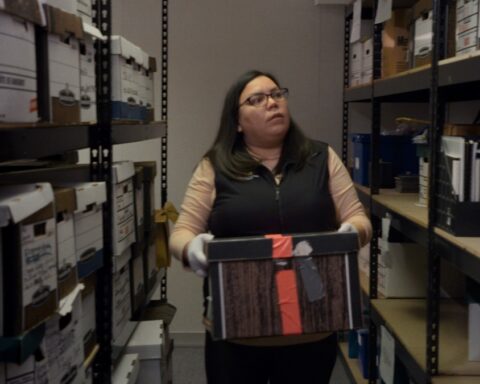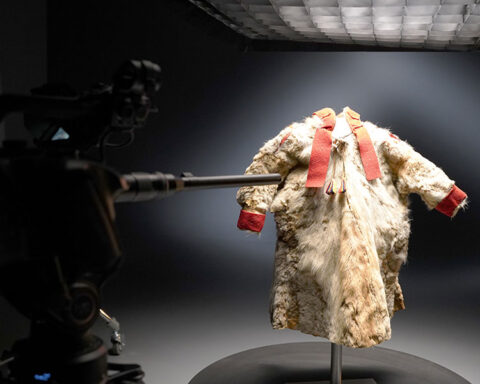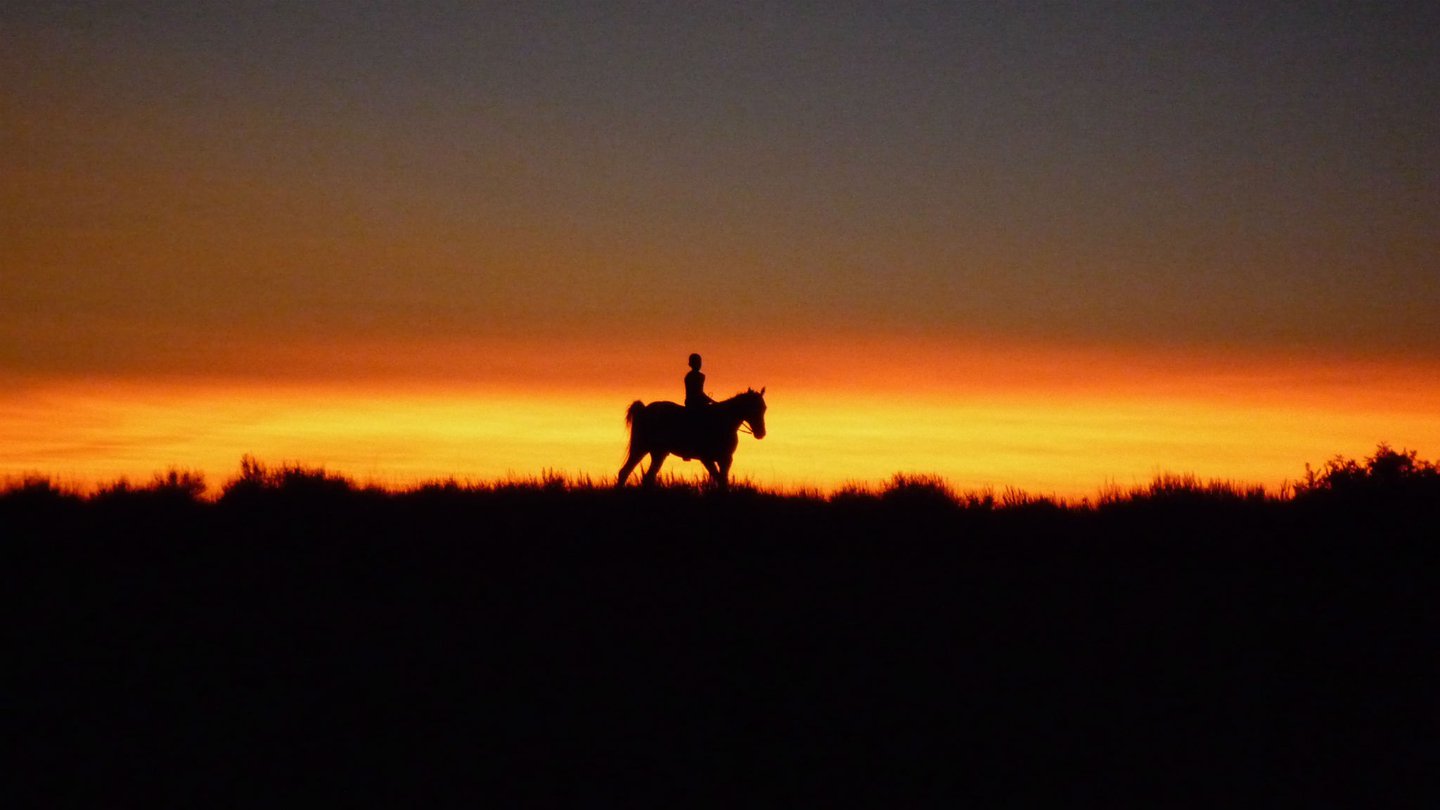Renowned film archivist Elizabeth Klinck organizes panels and workshops at international markets to highlight the importance of visual and editorial research and is, in a practical way, the fairy godmother of this unheralded field. Her own research and clearance credits number in the hundreds. Klinck’s accolades include an 2006 Emmy nomination and a 2008 Focal Lifetime Achievement Award.
Not content to rest on her laurels, Klinck founded the Visual Researchers’ Society of Canada/Association des recherchistes en audiovisuel du Canada (VRSC/ARAC. visualresearch.ca), which presently has 85 members across Canada. It’s an information exchange, networking, and lobby organization for the research and rights clearance professionals in documentary film. Klinck and the VRSC/ARAC have taken on a wide range of archive-related issues, notably lobbying to streamline access to the National Archives of Canada, which has a “quicksand” three to six month turn-around time.
Since City, Global and Alliance Atlantis networks don’t make their news material available, visual researchers can only go to CBC, NFB, and CTV archives. To get other Canadian material in a timely fashion, they currently by-pass their own archives and access those in other countries such as the National Archives or the Library of Congress in Washington. This is regrettable since every Canadian producer is obliged to deposit a copy of their film in Canada’s national archives and Canadian producers would benefit financially if researchers could avoid unnecessary procedural hoops and access their own country’s public material in time to make a film.
Klinck also serves as a clearinghouse for job offers, sending out three or four producer requests to VRSC/ARAC members weekly. The organization is currently lobbying for a research award at the Geminis, in accordance with the Emmys and the Juneaus, and for preferred and affordable rates with the large commercial archives. To help each other, members collegially share information on E&O [Errors and Omissions] insurance, digital rights, new archival resources, templates of agreements.
This January, Klinck organized an “Art of Archives” panel for the prestigious History Makers conference. She made the panel sing by demonstrating how archives carry, layer and colour a story as convincingly as the film subjects themselves. When the filmmakers discussed what they had done, the audience had the pleasure of witnessing the mutual support and respect of two of America’s most famous auteur documentarians, Alex Gibney (Taxi to the Dark Side, Enron, Gonzo) and Robert Stone (The Taking of Patty Hearst, Neverland, Oswald’s Ghost, Earth Days.) Anyone who has seen their brilliant use of archival material—Gibney getting into Hunter Thompson’s head using visuals from the gonzo journalist’s massive left-behind archive (video, faxes, snapshots, letters, match boxes, 16mm film) juxtaposed with Thompson’s raw social and confessional audio tapes, or Stone getting into Patty Hearst’s head with a clock ticking inexorably as she moves in jerky images through the robbery—would thank Klinck for presenting a forum in which these filmmakers share their appreciation of and approach to archival material.
Fresh from his Sundance success with Earth Days, Stone said that he had collected over 1000 hours of archival material before writing anything. “The footage leads me down the path,” he explained, saying he likes to look at everything to do with his subject, “it’s as much the subject of the film as anything else.” Finally he decided to explore the environmental crisis through the personal narratives of four long-term activists, using the archives to “take the audience into the minds of the characters so they could experience what the characters realized.”
But much of what Stone was trying to show or say was “unfilmmable.” And so he used archival material—cutting his character’s materialistic dissatisfaction with old commercials, and setting out the perspective of the film with images like the astronaut’s photo of the earth from space: “the idea that people live together on a small planet and we have to get our head around it.” Since Stone doesn’t use narration and therefore “can’t write myself out of problems,” his films are very time-consuming. He edited Earth Days for over a year on two editing machines, with himself on one and a close colleague on another.
Alex Gibney showed two Enron sequences he introduced as relevant to the current economic meltdown. The first included a pointed excerpt from The Simpsons showing a precipitous roller coaster ride, up and down, which The Simpsons refused to license. Gibney’s lawyers insisted he include a comment in the film contextualizing the material to avoid a copyright suit. Gibney solved the problem of an out-of-nowhere didactic statement by breaking up the excerpt with audio from a character who says, “It became a cultural moment.” And fair use was in play.
Gibney’s second sequence showed the powerful potential of archival audio. He combed through 70 hours of audio-tapes of trader conversations and “the tone of voice, the kind of frat house trading was really the staggering, shocking thing.” How then to use the found audio? Gibney often turns to music “to add dimension”, and he was already immersed in Enron – related pop-art possibilities, which is “kind of categorizing it in terms of this might be a Fastow song, this might be a Skilling song, this might be a Lay song,” as he told Ivana Redwine for About.com. “And there are certain kinds of songs that I was particularly interested in. That’s why you hear a lot of Tom Waits in the film. His songs are sort of bitterly ironic. And what he often does is to have a bouncy, jaunty melody with a very dark lyric. And vice versa.
“Which is also what I like about the Billie Holiday song “God Bless the Child.” That’s one of the most beautiful melodies you’ll ever hear. Her voice is so lilting. But the lyrics themselves are so very dark, all about how the powerful crush the weak. Which is also, as it happens, a theme of the film … every song also had to work and feel as if it were coming out of the film. But it also enabled me to have a voice. The music ends up kind of being a toe-tapping Greek chorus. And from time to time, it’s my way of injecting a little commentary on the enterprise. “
In this second sequence, Gibney took viewers inside the traders’ heads. Using trader audio, news footage, high-octane up-tempo music, he communicated the traders’ high: “they think of it like a video game.” As tension built, he cut in archival footage of the notorious Milgrim experiment in which participants are encouraged to cruelly, amorally increase the voltage of the shocks they administer to their subjects. The playfully nonrepresentative montage gave viewers the feeling of high-risk trading, making them privy to the culture of Enron-type greed.
In the question period, Gibney said he was a huge fan of Stone’s work. Asked why, he spoke without hesitation, intimately, as if it was something he recognized and knew from the heart. “I feel a sense of authorship of the material,” he said, “Robert [Stone] looks at archival material in such a way that it comments on the process of photography, becomes subjective, fun, playful, profound.” He said Stone puts archival material into the narrative structure in such a way that it means something else. “He celebrates the material and bends it to his will.”
Stone agreed that he tries to take an historical image and turn it into something that can connect emotionally to the audience, such as reconstructing Kennedy’s motorcade using home movies, “to communicate, connect us to the past, or else it becomes banal.”
When Gibney finished, an audience member asked Robert Stone:
“Alex has said laudatory things about your work. What do you think of his?” she asked.
Stone’s severe face broke into a wide grin. “I think the same of him, “ he said.
And with that, Elizabeth Klinck successfully wrapped her New York archival event and headed off to Reel Screen in Washington to produce an information session on the difference between fair use and fair dealing. In coming months, Klinck’s adventures in the archival/clearance trade will include revelations of footage marketplaces for producers, merger of copyright holders, sources for free footage, celebrity rights, stretching your archive dollar, rights clearance, cooperative communal archives, good lawyers, E&O insurance, creative use of archives, music clearance, new media clearance, and copyright reform: fair use and communal E&O insurance.












